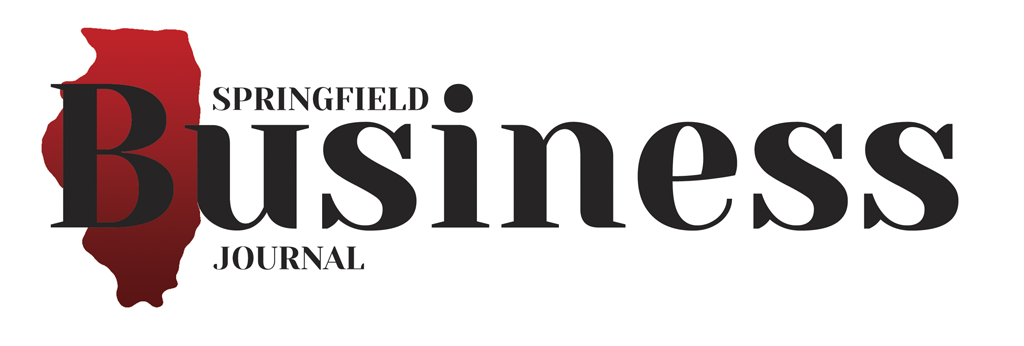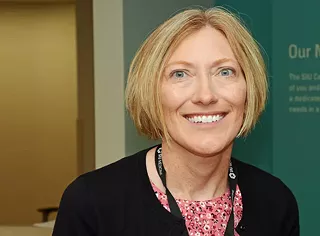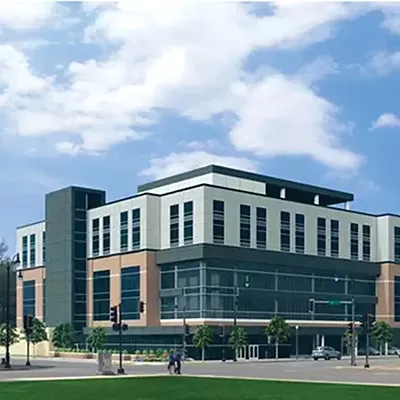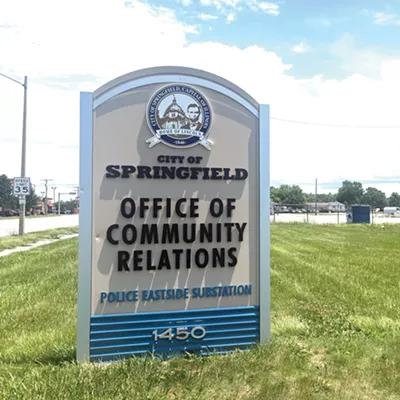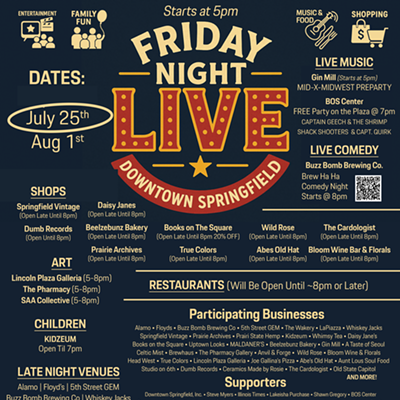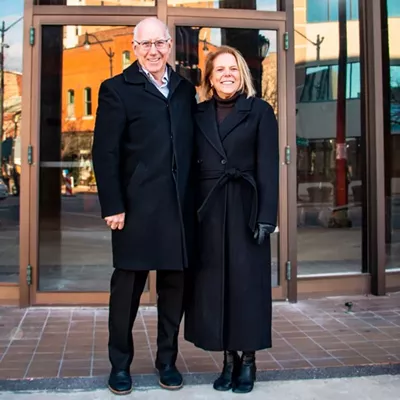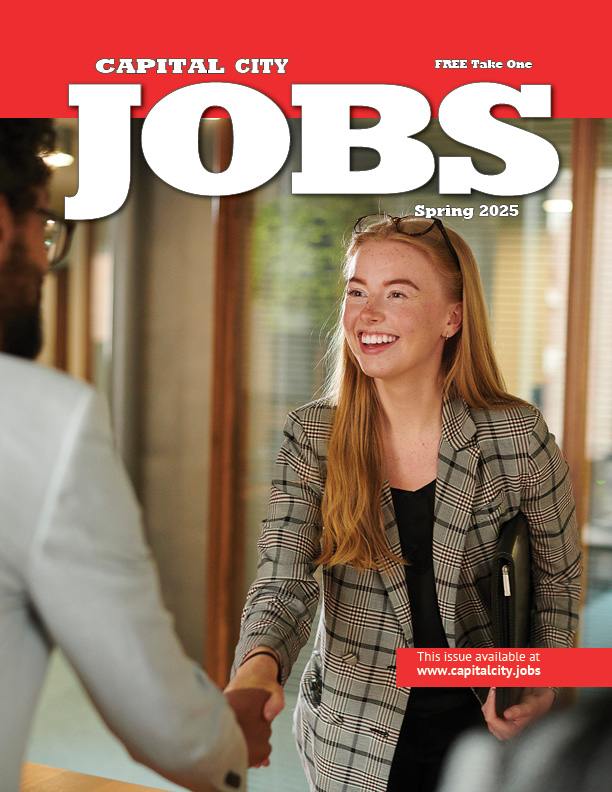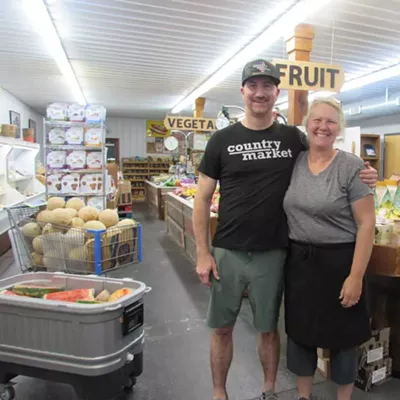ARTICLE AND PHOTOS BY DAVID BLANCHETTE
A three-year collaborative effort to improve the overall health of a specific Springfield neighborhood has received national recognition and is poised to expand into another area of the capital city.
The American Hospital Association has recognized HSHS St. John’s Hospital and Memorial Medical Center with the NOVA Award for the Enos Park Access to Care Collaborative, a joint effort to improve community health in a low-income neighborhood located between the hospitals. The two Springfield hospitals were among five recipients of the 2018 award, which was presented July 28 at a ceremony in San Diego, California.The two hospitals partner with SIU School of Medicine’s Center for Family Medicine, a federally qualified health center, to administer the program.
The NOVA Award recognizes hospitals and health systems across the nation for their collaborative efforts toward improving community health. The award is an affirmation of the success of the Access to Care program, which has directly impacted more than half of the 2,300 Enos Park neighborhood residents, reduced emergency room visits, increased access to numerous types of health care and social services and has improved the daily lives of many in the area.
The program came out of a 2015 Sangamon County Community Health Needs Assessment, which was conducted by the two hospitals and the Sangamon County Department of Public Health. The assessment, which nonprofit hospitals are required to conduct every three years, identified access to care as a top priority for the community. The two hospitals decided to partner on a project to address that need in the Enos Park neighborhood, which is located within the boundaries of the Mid-Illinois Medical District.
The recently completed 2018 needs assessment survey identified that access to care is still a top priority. The Pillsbury Mills neighborhood, directly east of Enos Park, will be the next beneficiary of the collaborative program, with another Springfield neighborhood in the discussion stages. The program will then be called the Access to Health Collaborative, but efforts in Enos Park will also continue, according to Kim Luz, director of community outreach for HSHS St. John’s Hospital.“The program has far exceeded our expectations in every area,” Luz said. “It’s an incredible feeling. We hear the stories and the impact this program has had in the lives of individuals and families in Enos Park.”
“It feels really good, just knowing that we are able to make one simple connection and let an individual who perhaps is socially isolated or doesn’t know the questions to ask or where to seek assistance, know they now have a trusted source to turn to,” Luz said. “In the past, that person may have felt that nobody cared about them. It’s giving an individual a sense of worth, in addition to improved health.”
HSHS St. John’s and Memorial have split the $500,000 cost of the three-year initiative to address health care access and social issues in the 36-square-block Enos Park area. The investment is paying the salary of the project director and three community health workers.
“We are two competing hospitals participating in something that is making such a huge difference,” Luz said.
Paula Gramley is the community benefit program manager at Memorial Health System. She and Luz were among a group of health care leaders who first came up with the Access to Care idea in 2015.
“I have been amazed at what has happened in just under three years,” Gramley said. “The program has really exceeded any expectations that I had. It’s been very rewarding to watch; it’s like ripples, and it just keeps going out.”
“In the beginning. we had to decide if we wanted to do something really large but shallow, a community-wide thing, or did we want to take a deep, narrow dive into one geographic neighborhood and try to make a difference there,” Gramley said. “Enos Park lies between the two hospital campuses, they had indicators showing need, and the Enos Park Neighborhood Improvement Association was a very strong collaborator to help us make inroads into the community. That was going to put us much farther ahead than starting from scratch with a neighborhood that didn’t know us very well.”
Step one was finding a person who could take charge of the program, and from the start the same name kept coming up - Tracey Smith, director of population health integration and community outreach at SIU Medical School. Smith has a doctorate in nursing and the community-focused, holistic health model is a philosophy she has embraced for many years.
“I was really excited to see the health care system taking the lead in looking outside of the box to address health care needs,” Smith said. “We had not had this opportunity before, and we wanted to take full advantage of it.”
Smith organized the Access to Care initiative around a team of three community health workers who have been a constant presence in Enos Park. They help residents understand how to better take care of themselves and navigate the health care system, but also assist with a variety of social issues such as living conditions, food, children’s school attendance, crime, mental health issues and employment.
“We had to take a look at how we build healthy communities for individuals to live in, places where people feel safer and more connected,” Smith said. “We didn’t just want to use the measurements of health that we were comfortable with before.”
“The right starting point is listening to a client tell you what they need, not them listening to us tell them what they need,” Smith said. “Sometimes it’s health that needs to be addressed, but sometimes it’s other life needs that need to be addressed first.”
The community health worker approach is effective, Smith said. More residents have been linked to a regular health care provider and unnecessary emergency department visits have dropped more than 20 percent. Crime and 911 calls in the neighborhood are down. Clubs have been formed to provide area children with wholesome activities.
“If we only focus on individual lives, we will have very limited impact on community,” Smith said. “But if we focus on community and individual lives together, that synergistic effect is huge. You have to do those jointly, and that is the strength of this program.”
“I’m really proud of the folks who live in Enos Park,” Smith said. “They show that you can take a diverse population of individuals, and you can live together and support each other.”
Jim Medley worked at the Washington Street Mission before Smith contacted him about being a community health worker for the Access to Care program. He is now a part of the daily lives of many Enos Park residents, and that makes for some very long but gratifying days, including a memorable one in July.
“I started off the day taking a couple of people to doctors’ appointments, both of whom asked me to come into the appointments with them to act as support and also as an interpreter, because a lot of times doctors talk over people’s heads,” Medley said. “Another patient asked me to come into a psychiatric intake with him for the same reason.”
“I then went to a couple of food pantries because a couple of our clients had run out of SNAP benefits and money and were short on food, so we did a food pantry referral and got them some food,” Medley said. “Then a co-worker and I found a family with six kids who were all sleeping on the floor. We got six mattresses, all donated by people in Enos Park, and we became furniture movers. We hauled the mattresses up to the family.”
Medley ended his day bringing comfort to a family of five.“There was a young mother with four young kids and it was a really hot summer day, and they were just burning up in this house,” Medley said. “So I went to a local church pastor and the congregation donated a window air conditioner that I installed that day.”
Medley, fellow community health worker Brigett Virgin, and the rest of the Access to Care team can also help people access government benefits and obtain important identification documents and often literally walk them through the process.
“I had a nursing student shadowing me back in April and she asked me ‘what do you do?’ And I said ‘everything.’ And at the end of the day, she said, ‘now I see what you were talking about,’” Medley said. “We are improving the health of the community one person at a time. It’s not about the organization, it’s about the people.”
One of those people is 64-year-old Enos Park resident Rosie Jackson, a Chicago transplant who moved to Springfield nine years ago to be near her daughter.
“I look at Jim (Medley) more like a brother from another mother, and I tell him when he comes by that he looks good to me,” Jackson said. “I’ll be talking junk to the health workers, I keep ‘em laughing. But I love them, I feel safe with them.”
The community health workers helped Jackson find a regular doctor and specialists to take care of medical issues she has. They have also assisted with some non-medical concerns.
“They’ve been trying to get the rowdy people out of the neighborhood,” Jackson said. “When they make a lot of noise across the street I tell the health worker about it, and I guess they tell the people who can take care of it. The police started coming around more.”
Jackson has some advice for the folks who run Access to Care. “Keep on doing what they are doing. I’m really glad to be here,” Jackson said. “Just keep up the good work is the only thing I can say.”
The community health workers have worked closely with the Springfield Police Department to address Enos Park residents’ concerns about crime and safety, and the neighborhood police officers are friends with many of the neighbors.
“They know who we are, we’re not just somebody in a police car. They can put a face with a name, and that’s a huge benefit,” said Chris Jones, who is in his third year as a neighborhood police officer in a beat that includes Enos Park. “Calls for service have come down, it’s a healthier community, residents are more stable, they have help in getting the things they need for daily living.”
Jones participates in the bike club and takes Enos Park area children on bicycle rides throughout the Springfield area. He also isn’t shy about helping community health workers when they see residents in need.
“When Benedictine was closing down, my partner and I went there, grabbed some beds, and took them to different houses for people who didn’t have a bed,” Jones said. “People are surrounded by good people who are pulling in the same direction with the same goal, and Enos Park is a good, lively community.”
The Enos Park Neighborhood Improvement Association has been an active partner with the Access to Care program from the beginning. The association owns two duplexes and has rented them to Access to Care clients at a reduced amount to provide better living conditions and lower the incidence of homelessness in the neighborhood.
“It helps clean up the neighborhood physically. It takes someone who could potentially be living on the street and gives them decent housing,” said association board member Linda Maier. “It has helped the overall outlook of the neighborhood.”
“Access to Care is a valuable resource for people in the neighborhood who don’t have a lot of options and I like the idea that it’s there,” Maier said. “A lot of communities could use the program. I think we are kind of lucky to have it.”
When the Access to Care program started in 2015, HSHS St. John’s and Memorial also began paying for a mental health clinician to work on-site for three years in McClernand Elementary School in Enos Park. The clinician screens children to detect social and emotional difficulties and provides treatment to children with mental health problems.
The McClernand School initiative is part of The Children’s MOSAIC Project, an acronym for Meaningful Opportunities for Success & Achievement through Service Integration for Children. While the hospitals are covering the costs in Enos Park, MOSAIC is supported in other parts of Springfield by Memorial Behavioral Health, the Southern Illinois University School of Medicine, Springfield Public Schools, The Springfield Project and the University of Illinois at Springfield.
Conceptualizing, funding and operating the Access to Care program was a risk for the two competing local hospitals in Springfield, but looking back, their leaders are pleased with what the partners have accomplished.
“Access to care was identified as one of the most significant issues in our community, so the two hospitals got together and decided to take a deep dive into one geographic neighborhood to identify and address issues that prevent residents from getting the care they need to live healthy lives,” said Ed Curtis, president and CEO of Memorial Health System.
Dr. Charles Lucore, president and CEO of HSHS St. John’s Hospital, agreed. “The outcomes demonstrate that if you provide access to the right type of health care in the right place at the right time, it’s going to contribute to wellness and a better living standard,” Lucore said.
